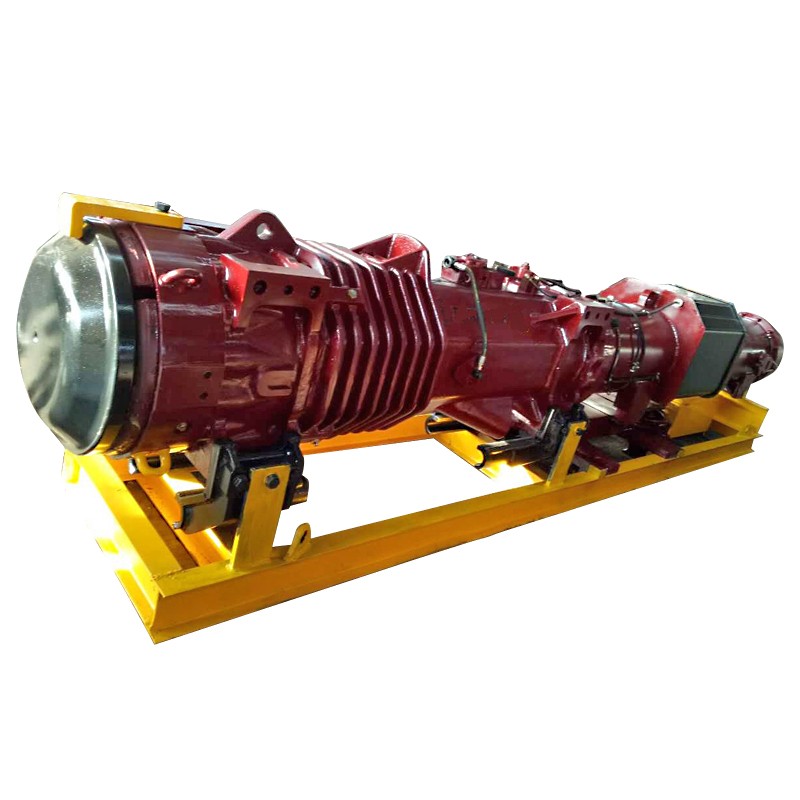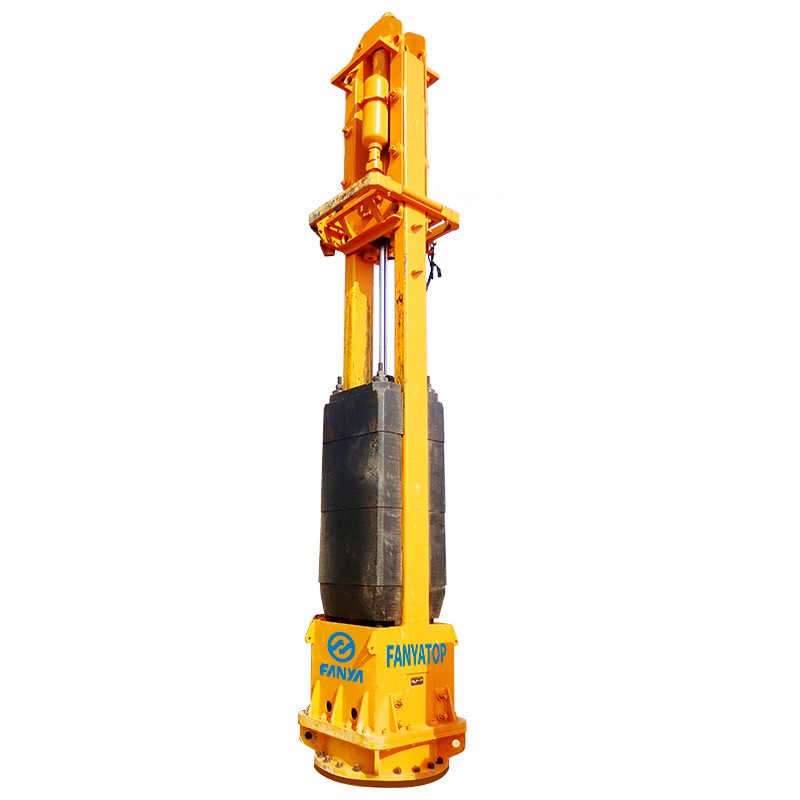Chapter 1: When "Noise" Became the First Line of Defense
In the predicament of Pier P-17, our first enemy wasn't the geology; it was the noise. Every blow from the impact hammer was like an explosion, with sound waves radiating outward without mercy. The environmental agency had drawn a red line in the sand—invisible, but absolute.
That's when the first hung vibratory hammers arrived on site. As the massive crawler crane lifted it into the air and it powered on, we all held our breath. The expected roar never came. Instead, there was a deep, powerful, but sustained "hum."
It was much quieter, but still, we worried. The FANYATOP technical engineer on-site then showed us the true power of "high-frequency" vibration. He explained that the energy from high-frequency waves is more concentrated and travels shorter distances. More importantly, its sound frequency is outside the most sensitive range of human hearing. It's like the difference between a mosquito's buzz and a jackhammer's rattle—though both are sounds, one is far more easily "absorbed" by the environment.
The final monitoring results were a huge relief: at the 500-meter boundary of the reserve, the construction noise was well within the legal limits. We had finally been given the "green light" to proceed. It was at that moment we understood: in modern engineering, a machine's advancement is measured not just by its power, but by how "civilized" that power is.
Chapter 2: The Dance of Resonance That Conquered the Hard Clay
With the noise issue solved, we faced the real beast: that five-meter-thick layer of hard clay. This type of geology is a nightmare for any piling crew. It's both hard and sticky. An impact hammer feels like hitting a giant block of taffy—most of the energy is absorbed, and you hear the bang, but the pile doesn't move.
Our suspended vibro hammer began its performance. Following the engineer's advice, the operator didn't start at full power. Instead, he began vibrating at a specific, controlled frequency. The massive pile began to "shiver" with a subtle, almost imperceptible tremor.
The engineer explained it to us like this: "It's like how a singer can shatter a glass. Every type of soil has its own natural resonant frequency. When you 'excite' it with a steady, continuous frequency, you begin to break the cohesive bonds between the particles. You're not smashing your way through; you're using a continuous 'dance of resonance' to persuade it to loosen up from the inside."
Then, the operator slowly increased the power. We watched, mesmerized, as the very pile that had defied the impact hammer began to sink. It moved slowly, but with an unstoppable, steady resolve. The process was quiet, yet immensely powerful. For old engineers like us, who were raised on the belief that "loud equals strong," it was a breathtaking display of "silent strength."
In the end, it took us less than half a day to successfully penetrate the clay layer that had once seemed insurmountable. This set of vibratory driving hammers had solved a critical technical problem with something that felt like artistry.
Chapter 3: The Reliability in the "Heart" That Steadies the Ship
What's the biggest fear in marine construction? It's not the wind or the waves. It's equipment failure at a critical moment. On land, a breakdown means a service truck is a few hours away. Out on the open water, a machine down means the entire project stops, and you're burning astronomical amounts of money every minute.
The work on Pier P-17 continued for nearly two months. The FANYATOP vibro hammer worked almost around the clock. Its powerful heart—that gearbox built with a Parker motor and Swedish bearings—endured the ultimate test.
Those of us in this business know you can't judge a machine by how it runs on day one. You judge it after it's been running hard for a month straight. Has the sound changed? Has the efficiency dropped? Are the hydraulic fittings starting to weep?
This piling driver hammer gave us the right answers. From beginning to end, it maintained that same steady, powerful hum. Every start and stop was crisp and clean. It made us believe that what we had hanging hundreds of feet in the air wasn't just a cold machine, but a completely dependable partner with a powerful, unbreakable heart.
That kind of reliability, born from its core components, is like the ballast in the belly of an ocean liner. You can't see it, but it's what keeps the entire ship steady through the storm.
Chapter 4: A Few Hard-Earned Truths from the "Battlefield"
With the story told, I want to share a few real-world lessons we learned about the Hydraulic Vibro Hammer from this experience.
1. Don't be fooled by size. The right match is everything.
Many people think bigger is always better when choosing a hammer. We learned that the key isn't how heavy the hammer is, but whether its eccentric force and frequency are perfectly matched to your pile type and ground conditions. The expert advice FANYATOP's engineers gave us in the planning stage was the single most important factor in our success.
2. The power pack isn't a supporting actor; it's the supply line.
We've seen sites try to save money by pairing a great hammer with a generic power pack. The result is a champion athlete being fed a poor diet—it can't perform. The flow and pressure from the power pack are the "ammo and rations" for the front line; they must be abundant and stable. Buying the complete FANYATOP system saved us from this common pitfall.
3. Details determine success, especially the clamp.
Offshore, getting a secure grip on the pile is paramount. For the extra-long pipe piles we were using, FANYATOP recommended their dual-clamp system. This seemingly small detail ensured the pile remained perfectly straight during vibration, saving us an incredible amount of time and trouble during the subsequent pile cap construction.
Conclusion: We Didn't Conquer the Geology; We Conquered the "Impossible"
In the end, the foundation for the "devil pier" P-17 was completed nearly a month ahead of the revised schedule, and in full compliance with all environmental standards. That Hydraulic Vibro Hammer became the celebrated hero of our project team.
This story taught us that to meet the increasingly complex challenges of modern engineering, we no longer need bigger, heavier hammers. We need smarter, more precise, and more reliable tools. We need the ability to "dissolve" problems with intelligence, not just "fight" them with brute force.
The FANYATOP suspended vibro hammer showed us this capability in spectacular fashion. It made us understand that true power is controllable, it is efficient, and it is capable of working in harmony with the world around it.
The next time your project runs into its own "impossible" knot, perhaps you, too, should change your approach and listen for the wise, powerful voice of vibration.




